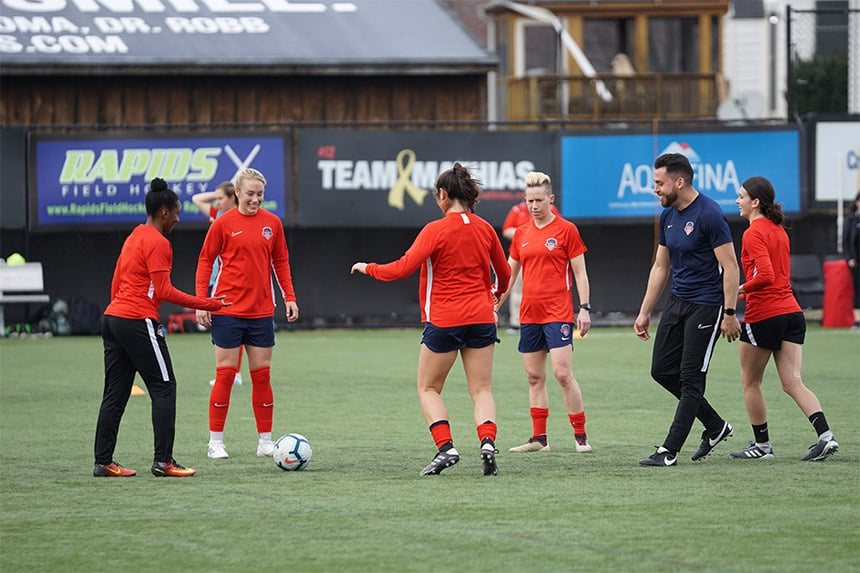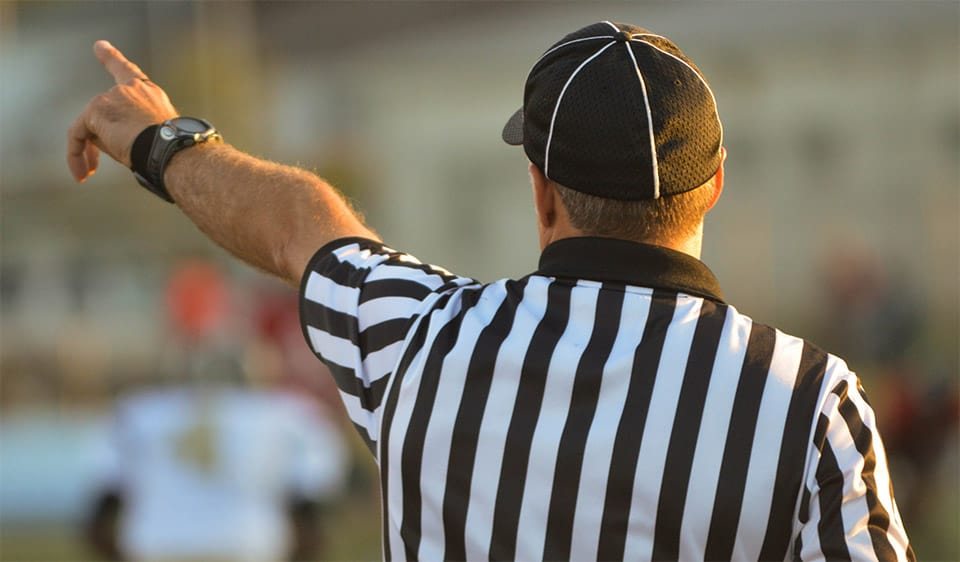As an ortho surgeon, my primary concern when it comes to sports is managing the risk of injury. These days, however, I’m faced with an additional concern—managing the risk of viral transmission among athletes in the midst of a global pandemic. Team sports present a unique challenge to social distancing. Should the game go on? And if so, at what point do we blow the whistle?
As someone who had a confirmed case of COVID-19 in March 2020, I know firsthand just how serious this virus can be — and I was fortunate to make an excellent recovery. I’ve also been an avid athlete, so I truly understand the importance sports play in the physical and mental wellness of children, teens, and athletes of all ages. For the first time in decades of practice, I’m challenged to balance the risk of viral transmission against my wish for the game to go on. I don’t think it’s possible to have a perfect game plan, but here are my thoughts on how to tackle it given what we currently know.

Manage the risk of injury
There are real and significant injury risks associated with a return to play in almost all team sports right now. While individual players may have tried to keep up with their personal training and fitness routines, it’s just not the same as gameplay. For example, basketball players cannot mimic the sensory input that influences decisions during a real game. For example, the spatial awareness needed to break through a hard-set pick or drive the lane is not the same as what’s used during practice. Even if the athlete has worked hard to prepare for the season, there is a real difference between working hard and competing against another athlete.
Due to the pandemic, players will face an increased risk of serious injury for four main reasons:
- Less time to train
- Less off-season competition
- De-conditioning
- Increased level of injury
How can these risks be managed? Firstly, personal training needs to be of the highest quality possible. Now is the time to push hard at home and get creative with individual fitness plans. Then, once athletes find themselves on the court, field, or ice, they need to ease themselves back in. With less time to train and possible de-conditioning, their musculoskeletal system needs extra time to gain back full function, strength and mobility. If the transition period is rushed, disaster could strike in the form or a sprain, strain, break, or dislocation. Instead, the focus should be on a foundation of generalized conditioning and cross-training as the athlete advances forward with sports-specific competitive drills.
“If the transition period is rushed, disaster could strike in the form or a sprain, strain, break, or dislocation.”
Manage the risk of viral transmission
Next, there is a risk of spreading COVID-19 through team sports. This risk is real and it shouldn’t be minimized. Take a look at the Florida Marlins, St. Louis Cardinals, or Cincinnati Reds. If teams choose to go ahead with play, here are some tactics they can implement:
Transportation: If buses are being used to transport athletes, then the athletes should wear a mask and sit as far apart as possible. Hands should be sanitized before and after riding the bus, and the bus itself should be disinfected. Of course, the best-case scenario is if parents can bring their own kids to games, therefore avoiding the need for carpooling or group buses.
Spectators: The audience should be kept to the bare minimum, although clearly some parents and guardians will need to be there. If possible, only one parent should attend and siblings should be left at home. Spectators should be socially distanced throughout the stadium or arena, etc. They should also wear masks and sanitize their hands often. And, course, if any family members have symptoms, then no one should attend the game at all.
Team personnel: All non-players, such as coaches and scorekeepers, should wear masks and frequently wash their hands or use hand sanitizer. Social distancing should be practiced to whatever extent is possible and care should be taken when managing equipment to avoid possible cross-contamination.
Players: Even though they may not like it, players should try their best to follow social-distancing and sanitation guidelines. When they’re not in the game, they should wear masks on the bench.
Sharing isn’t caring: Be careful about athletes sharing clothing, towels, food, or water bottles. In the locker room, each athlete should use their own toiletries (eg. soap or shampoo), and towels should go directly into the hamper after first use.
Celebration: It’s time to create new celebratory traditions that avoid physical contact. While handshakes, high-fives, and chest bumps are out, athletes can get creative in celebrating victories. Because team gatherings of all kinds should be avoided, team celebrations should be done digitally via social media or team videos. Creativity may be required!
“This season may serve as an important lesson for our young athletes on the value of true teamwork through trying times.”

When do we blow the whistle?
Although getting back to the game is an exciting prospect for athletes, coaches and spectators, criteria should be set before the season begins for what circumstances would cause gameplay to be paused or shut down. There is no exact science behind this, as we can see from watching major league sports right now. Instead, parents, coaches, and athletic directors need to agree on a set of guidelines. These guidelines are meant to complement local and state guidelines, not replace them. Furthermore, the Centers for Disease Control has also provided considerations for return to youth sports. Some examples that can be established before play resumes:
- If 10% of the team show symptoms or test positive, then the team has to go into quarantine for a period of time to stop a potential outbreak.
- Or, if the number of affected kids grow or reach beyond 20%, the program must pause until all players are symptom-free for two weeks.
At the beginning of the season, consider having a candid conversation with the young athletes in your life. It can be hard for them to absorb the importance of following guidelines, so an effective conversation may sound like: “We’ve created an opportunity for you to participate and do what you love to do. Now we need you to make a commitment to the safety and wellbeing of others in your life. Your actions will not only affect you, but will also affect your parents, grandparents, your coaches, and their loved ones.”
Hopefully, by using common sense and paying attention to local and national guidelines, our young athletes can get back in the game safely. This season may serve as an important lesson for our young athletes on the value of true teamwork through trying times. We’re all in this together!








